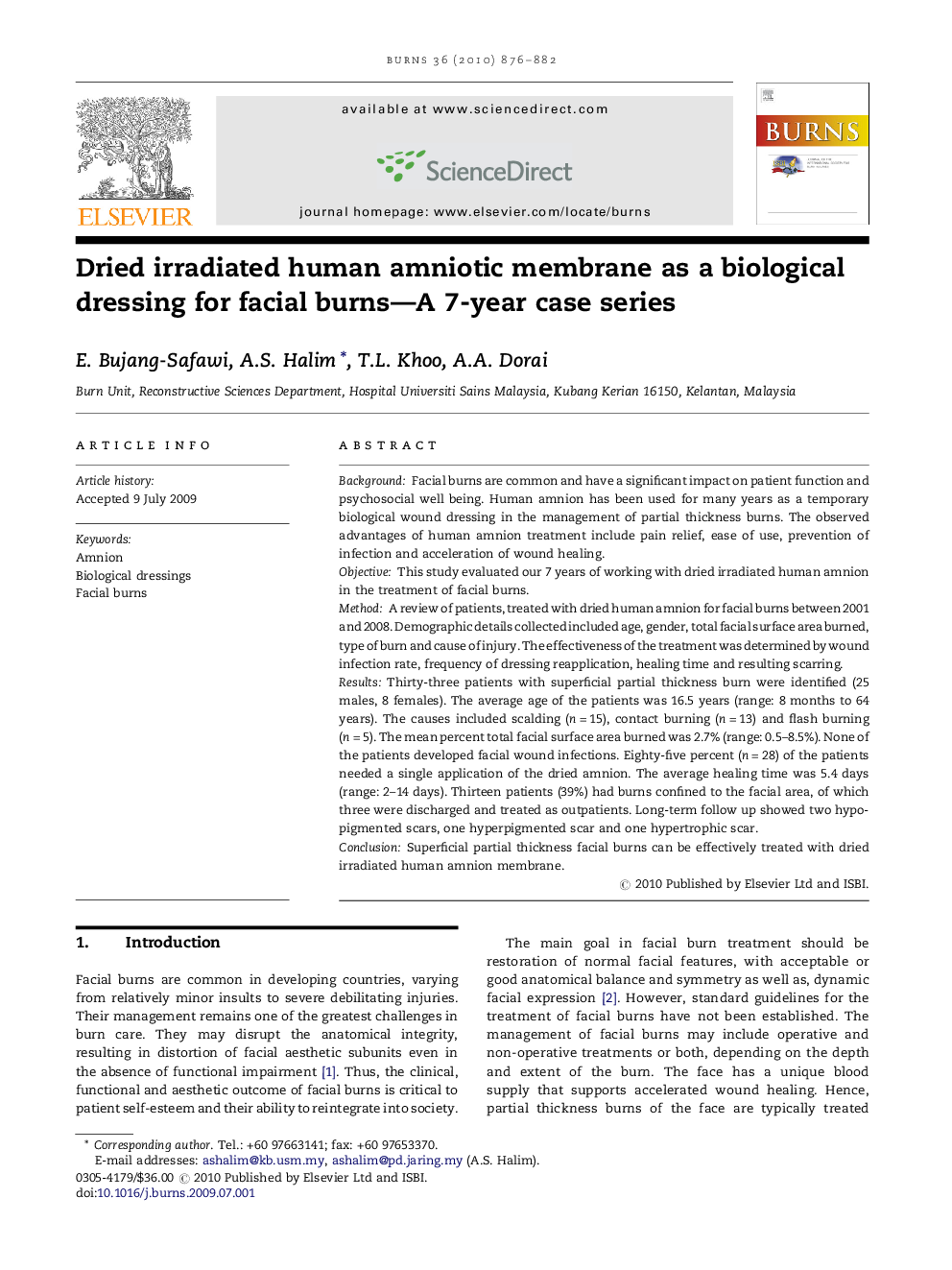| Article ID | Journal | Published Year | Pages | File Type |
|---|---|---|---|---|
| 3105394 | Burns | 2010 | 7 Pages |
BackgroundFacial burns are common and have a significant impact on patient function and psychosocial well being. Human amnion has been used for many years as a temporary biological wound dressing in the management of partial thickness burns. The observed advantages of human amnion treatment include pain relief, ease of use, prevention of infection and acceleration of wound healing.ObjectiveThis study evaluated our 7 years of working with dried irradiated human amnion in the treatment of facial burns.MethodA review of patients, treated with dried human amnion for facial burns between 2001 and 2008. Demographic details collected included age, gender, total facial surface area burned, type of burn and cause of injury. The effectiveness of the treatment was determined by wound infection rate, frequency of dressing reapplication, healing time and resulting scarring.ResultsThirty-three patients with superficial partial thickness burn were identified (25 males, 8 females). The average age of the patients was 16.5 years (range: 8 months to 64 years). The causes included scalding (n = 15), contact burning (n = 13) and flash burning (n = 5). The mean percent total facial surface area burned was 2.7% (range: 0.5–8.5%). None of the patients developed facial wound infections. Eighty-five percent (n = 28) of the patients needed a single application of the dried amnion. The average healing time was 5.4 days (range: 2–14 days). Thirteen patients (39%) had burns confined to the facial area, of which three were discharged and treated as outpatients. Long-term follow up showed two hypopigmented scars, one hyperpigmented scar and one hypertrophic scar.ConclusionSuperficial partial thickness facial burns can be effectively treated with dried irradiated human amnion membrane.
